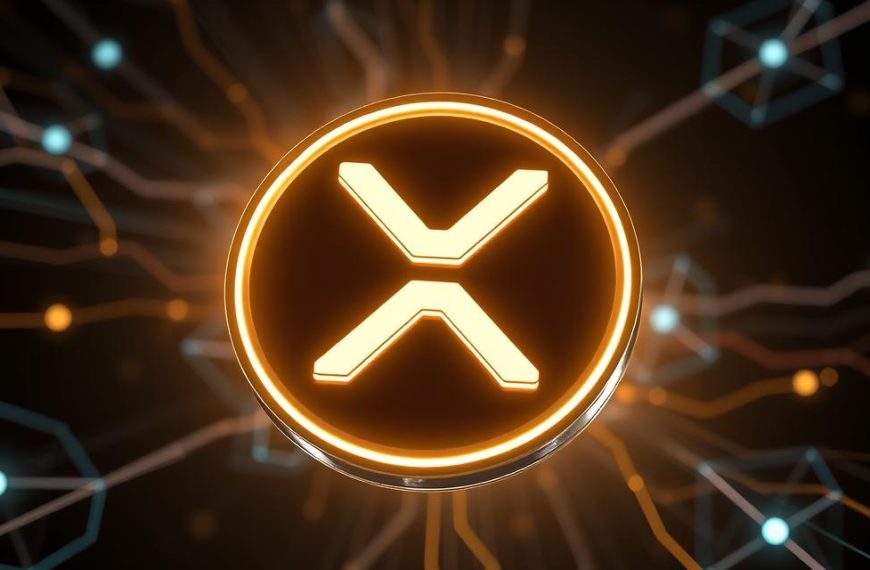The world of cryptocurrency has been shrouded in mystery, with many wondering how digital coins are created and transactions are validated. At the heart of this process is mining, a critical component of the blockchain ecosystem.
Cryptocurrency mining is often likened to digital gold mining, where computational power replaces physical effort. This complex process involves validating transactions and creating new coins, ensuring the integrity and security of the blockchain network.
As the backbone of the cryptocurrency world, mining has evolved significantly, from simple computer setups to sophisticated operations requiring specialized hardware. This article will delve into the intricacies of mining, covering the digital process, hardware requirements, economics, and environmental considerations, providing a comprehensive guide for those looking to understand how cryptocurrencies are created and maintained.
What Is Crypto Mining?
Crypto mining is the backbone of blockchain networks, enabling the secure and decentralized validation of transactions. It’s a process that not only secures the network but also releases new coins into circulation, making it a critical component of the cryptocurrency ecosystem. Crypto mining involves powerful computers solving complex mathematical puzzles, which helps to secure the network and verify transactions.
The Digital Gold Rush Explained
The concept of crypto mining can be likened to the Digital Gold Rush, where miners compete to solve complex puzzles, similar to how gold miners race to find precious metals. This competitive process is fundamental to the decentralized nature of cryptocurrencies, as it allows for the secure and transparent validation of transactions without the need for central authorities like banks. For more information on the value and liquidity of cryptocurrencies, you can visit this link.
Mining as a Validation Process
Mining serves as a critical validation process that ensures the integrity and security of cryptocurrency transactions. Miners use powerful computers to perform complex calculations that verify and record transactions on the blockchain. This process is crucial for the functioning of decentralized cryptocurrencies, as it allows for secure, transparent, and tamper-proof transactions. By validating transactions and creating new blocks, miners play a vital role in maintaining the integrity of the blockchain network.
The Fundamental Purpose of Mining
The fundamental purpose of crypto mining encompasses several critical functions that are vital to the operation of cryptocurrency networks. This process is essential for maintaining the integrity, security, and functionality of blockchain-based financial systems.
Transaction Verification
Crypto mining verifies transactions by confirming their legitimacy and adding them to the blockchain, creating an immutable record. Unlike traditional banking systems, which can take days to process transactions, crypto mining verifies transactions within minutes, making them visible to everyone on the network.
Network Security
The security of the network is enhanced through mining by making it computationally expensive to attack, thus preventing double-spending and other fraudulent activities. The public nature of the blockchain transaction history contributes significantly to security, making it difficult for malicious actors to execute fraudulent transactions.
New Coin Distribution
Miners are rewarded with new coins for their processing power and time, which not only incentivizes participation in network maintenance and security but also distributes new crypto into circulation according to predetermined protocols. However, some crypto networks aim to reduce their reliance on this incentive in the future.
How Crypto Mining Works: Step by Step
Crypto mining is a multifaceted process that can be broken down into several key stages, each playing a crucial role in the validation and addition of new blocks to the blockchain.
Transaction Pooling and Block Creation
The first stage involves the collection of unverified transactions in a memory pool (mempool). Miners then select and bundle these transactions into a candidate block. This process is crucial for preparing the transactions for validation.
The Puzzle-Solving Competition
Miners engage in a competitive process to solve a complex mathematical puzzle associated with each block. By adjusting a nonce value and using trial and error, miners attempt to find a specific hash value. The computational intensity of this process is immense, requiring quintillions of calculations per second.
Block Validation and Addition
The first miner to solve the puzzle broadcasts their solution to the network for verification. Other miners confirm the accuracy of the solution, and once verified, the new block is added to the blockchain. The successful miner is rewarded with newly created cryptocurrency and transaction fees, incentivizing continued participation in the mining process.
The addition of each new block creates an immutable chain of transaction history, forming the foundation of blockchain security. This step-by-step breakdown illustrates the intricate process of crypto mining work, highlighting the critical role of miners in validating transactions and securing the network.
Mining Difficulty Explained
Mining difficulty is a critical parameter in cryptocurrency mining, directly affecting the computational power required to mine new blocks. It measures how hard it is to find a hash below a target value, which impacts the computational effort needed to mine a block.
Automatic Adjustments
Blockchain networks automatically adjust difficulty levels to maintain consistent block times, despite fluctuations in the network hash rate. For instance, Bitcoin’s mining difficulty is recalibrated approximately every 2,016 blocks (roughly two weeks) to maintain a 10-minute average block time. This adjustment ensures the predictable issuance of new cryptocurrency, regardless of the number of miners participating in the network.
Hash Rates and Computing Power
The relationship between mining difficulty, hash rates, and computing power is intricate. As the network hash rate increases, the difficulty adjusts upward, requiring miners to deploy more computing power to remain competitive. This dynamic is illustrated in the following table:
| Network Hash Rate | Mining Difficulty | Required Computing Power |
|---|---|---|
| Low | Easy | Low |
| Medium | Moderate | Moderate |
| High | Hard | High |
Miners must constantly upgrade their equipment to maintain profitability as difficulty increases over time. This self-regulating mechanism helps maintain the economic balance of cryptocurrency networks.
Consensus Mechanisms in Cryptocurrency
The cryptocurrency landscape is dominated by two primary consensus mechanisms: Proof of Work and Proof of Stake. These mechanisms are crucial for validating transactions and securing the blockchain network.
Proof of Work: The Mining Model
Proof of Work (PoW) is the original consensus mechanism used by cryptocurrencies like Bitcoin. It involves a competition among miners to solve complex mathematical puzzles, requiring significant mining work and computational power. The first miner to solve the puzzle gets to validate a block of transactions and is rewarded with new coins and transaction fees. This process not only secures the network but also provides a security layer through the economic cost of attacking the network.
Proof of Stake: The Alternative Approach
Proof of Stake (PoS) is an alternative consensus mechanism that selects validators based on the amount of cryptocurrency they hold and are willing to stake as collateral. Unlike PoW, PoS does not require extensive computational power, making it more energy-efficient. Validators are chosen randomly to create new blocks, and they are rewarded with transaction fees and newly minted coins. Ethereum’s transition from PoW to PoS, known as The Merge, represents a significant shift in the crypto landscape, highlighting the potential for more sustainable consensus mechanisms.
The Hardware Behind Crypto Mining
The backbone of cryptocurrency mining lies in its hardware, which has evolved significantly over the years. Crypto miners use specialized, high-energy computers to solve complex mathematical puzzles, requiring substantial computing power.
ASIC Miners and GPUs
Cryptocurrency mining has transitioned from using Central Processing Units (CPUs) to more advanced hardware like Graphics Processing Units (GPUs) and Application-Specific Integrated Circuits (ASICs). ASICs are designed exclusively for mining specific cryptocurrencies, offering superior performance but limited flexibility. In contrast, GPUs provide a more versatile mining option that can be repurposed for different algorithms or returned to gaming use. The choice between ASICs and GPUs depends on the cryptocurrency being mined and the miner’s operational strategy.
Setting Up a Mining Operation
Setting up a mining operation involves several key considerations, including hardware costs, electricity requirements, cooling solutions, and internet connectivity. Miners must also consider the energy consumption of their operation, as it directly impacts profitability. The efficiency of mining hardware, measured in terms of hash rate per watt of electricity consumed, is crucial. Mining farms scale operations by deploying hundreds or thousands of mining units in optimized environments, highlighting the importance of a well-planned mining operation.
| Hardware Type | Performance | Flexibility |
|---|---|---|
| ASICs | High | Limited |
| GPUs | Moderate | High |
Mining Economics: Rewards and Profitability
Cryptocurrency mining is driven by economic incentives, primarily in the form of block rewards and transaction fees. The profitability of mining operations depends on a delicate balance of factors, including the cost of hardware, electricity expenses, and the current price of the cryptocurrency being mined.
Block Rewards and Transaction Fees
Block rewards are the primary incentive for cryptocurrency miners, serving as a prize for successfully validating a block of transactions. The block reward is predetermined and follows a specific issuance schedule, with events like Bitcoin’s halving reducing the reward over time. Transaction fees also play a crucial role, supplementing block rewards and expected to become the primary incentive as block rewards diminish.
Calculating Mining Profitability
To determine mining profitability, miners must consider various factors, including hardware costs, electricity expenses, mining difficulty, cryptocurrency price, and network hash rate. The volatility of cryptocurrency prices and adjustments in mining difficulty can significantly impact profitability. Miners often join mining pools to increase their chances of earning rewards, which are then distributed proportionally.
Environmental Impact of Crypto Mining
The environmental impact of crypto mining has become a pressing concern due to its massive energy consumption. Cryptocurrency mining uses an enormous amount of electricity, comparable to the energy usage of many midsize countries.
Energy Consumption Concerns
The most popular blockchains consume the most energy because they have the most miners competing for rewards. Each miner needs a lot of electricity to power their computing equipment, contributing to the overall environmental footprint. According to Investopedia, the competitive nature of mining drives ever-increasing energy consumption as miners deploy more powerful hardware.
Sustainable Mining Initiatives
In response to environmental criticisms, the industry is shifting towards sustainable mining initiatives. Some mining operations are now powered by renewable energy sources like hydroelectric, solar, and wind power. For instance, some companies are purchasing carbon offsets to mitigate their environmental impact.
| Renewable Energy Source | Potential Impact |
|---|---|
| Hydroelectric | High potential for reducing carbon footprint |
| Solar | Moderate potential, dependent on location |
| Wind | High potential, especially in windy regions |
Innovations in Mining Technology
Technological advancements are redefining the future of crypto mining. As the industry continues to evolve, new technologies are being developed to improve efficiency and reduce environmental impact.
Immersion Cooling Systems
Immersion cooling technology is gaining favor as a potential innovative step towards optimizing resource consumption in the mining process. By submerging ASICs in dielectric fluids, miners can achieve better heat dissipation and increased performance. This method reduces energy consumption and extends hardware lifespan, allowing for safer overclocking.
Dynamic Throttling and Efficiency Improvements
Dynamic throttling technologies automatically adjust mining power based on profitability factors, electricity costs, and network conditions. Miners are also leveraging real-time data analytics and machine learning to optimize their operations. This includes throttling up during favorable conditions or throttling down when the risk of overclocking outweighs the benefits.
| Innovation | Benefit |
|---|---|
| Immersion Cooling | Reduced energy consumption, extended hardware lifespan |
| Dynamic Throttling | Optimized mining power, improved profitability |
Conclusion: The Future of Crypto Mining
As the cryptocurrency landscape continues to evolve, the importance of mining in securing and validating blockchain networks cannot be overstated. Throughout this article, we’ve explored the key aspects of crypto mining, from transaction verification to the shift toward more energy-efficient consensus mechanisms. The future of mining will be shaped by increasing regulation, environmental concerns, and technological advancements. As the market adapts to these changes, understanding mining will remain crucial for grasping the fundamental value proposition of cryptocurrencies.




















